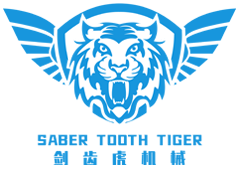-
Why Choose CNC Busbar Punching and Cutting Machines for Your Workshop?
Why Choose CNC Busbar Punching and Cutting Machines for Your Workshop? Table of Contents 1. Introduction to CNC Busbar Punching and Cutting Machines 2. Benefits of CNC Busbar Punching and Cutting Machines 2.1 Enhanced Efficiency in Production 2.2 Superior Precision and Accuracy 2.3 Cost Savings Over Time 3. Key Features of CNC
Why Choose CNC Busbar Punching and Cutting Machines for Your Workshop?
Table of Contents
- 1. Introduction to CNC Busbar Punching and Cutting Machines
- 2. Benefits of CNC Busbar Punching and Cutting Machines
- 2.1 Enhanced Efficiency in Production
- 2.2 Superior Precision and Accuracy
- 2.3 Cost Savings Over Time
- 3. Key Features of CNC Busbar Machines
- 4. Applications of CNC Busbar Punching and Cutting Machines
- 5. Choosing the Right CNC Busbar Machine for Your Needs
- 6. Maintenance Tips for Longevity
- 7. The Future of CNC Busbar Technology
- 8. FAQs About CNC Busbar Punching and Cutting Machines
- 9. Conclusion
1. Introduction to CNC Busbar Punching and Cutting Machines
CNC (Computer Numerical Control) busbar punching and cutting machines represent a pivotal advancement in the manufacturing landscape, particularly for workshops focused on electrical components and metal fabrication. These machines are designed to process busbars—conductors made of copper or aluminum—into specific configurations required for various applications. With the ever-increasing demand for high-quality, efficient production methods, CNC technology has become essential in modern workshops.
In this article, we will delve into the myriad benefits of using CNC busbar punching and cutting machines, highlighting how they can transform your workshop's productivity and operational capabilities.
2. Benefits of CNC Busbar Punching and Cutting Machines
The advantages of incorporating CNC busbar machines into your operations are numerous. Below, we explore some of the most significant benefits.
2.1 Enhanced Efficiency in Production
One of the most compelling reasons to choose CNC busbar punching and cutting machines is their ability to significantly improve production efficiency. Traditional methods of busbar processing often involve manual labor and several time-consuming steps. In contrast, CNC machines streamline the entire process by automating both punching and cutting tasks, reducing cycle times and increasing output.
By eliminating human error and repetitive motion, CNC technology allows for a smoother workflow. As a result, you can produce higher volumes of busbars with less downtime, ultimately leading to increased profitability.
2.2 Superior Precision and Accuracy
Precision is vital in manufacturing, particularly in electrical applications where even the smallest deviation can result in significant issues. CNC busbar machines deliver unmatched accuracy, thanks to their advanced computer-controlled systems.
These machines utilize precise programming to ensure that every cut and punch is executed to the exact specifications. This level of accuracy not only enhances product quality but also reduces material waste, as every piece is crafted to meet its intended design without excess.
2.3 Cost Savings Over Time
While the initial investment in CNC busbar punching and cutting machines may seem significant, the long-term cost savings are substantial. The efficiency gained through automation, coupled with reduced material wastage and lesser labor costs, translates to lower operational expenses.
Additionally, the durability and reliability of CNC machines mean they often require fewer repairs and less maintenance compared to traditional equipment. Over time, this results in a lower total cost of ownership, making CNC technology a wise investment for forward-thinking workshops.
3. Key Features of CNC Busbar Machines
Understanding the key features of CNC busbar punching and cutting machines can help you make an informed decision when selecting the right equipment for your workshop.
3.1 Automation Capabilities
CNC busbar machines are designed with automation in mind. They often come equipped with features such as automatic feeding systems and programmable control panels, allowing for seamless operation. This means you can set up a production run and let the machine operate autonomously, freeing your skilled operators to focus on more complex tasks.
Automation not only enhances efficiency but also ensures consistent quality across all busbars produced, reducing the likelihood of human error and improving overall product reliability.
3.2 Advanced Software Integration
Modern CNC busbar machines are typically integrated with sophisticated software that allows for easy design modifications and rapid prototyping. This software often includes CAD (Computer-Aided Design) capabilities, enabling designers and engineers to create precise busbar layouts and instantly send them to the machine for production.
Moreover, the software can be updated regularly, ensuring that your equipment remains on the cutting edge of technology and is capable of handling new designs as manufacturing needs evolve.
4. Applications of CNC Busbar Punching and Cutting Machines
CNC busbar punching and cutting machines serve multiple industries and applications. Some of the most common areas of use include:
- **Electrical Distribution**: Manufacturing busbars for power distribution in industrial and commercial settings.
- **Automotive**: Creating busbars for electric vehicles and traditional automotive electrical systems.
- **Renewable Energy**: Producing busbars for solar and wind energy systems, where efficient energy transfer is crucial.
- **Aerospace**: Crafting high-precision busbars for aircraft electrical systems.
Each of these applications requires specific design considerations, and CNC machines offer the versatility to accommodate various specifications and requirements.
5. Choosing the Right CNC Busbar Machine for Your Needs
Selecting the appropriate CNC busbar punching and cutting machine involves several factors:
- **Production Volume**: Assess your production needs. High-volume operations may require more advanced machines capable of rapid output.
- **Material Type**: Different machines may be optimized for various materials such as copper, aluminum, or others. Ensure the machine you select is compatible with your desired material.
- **Customization Options**: If your workshop frequently handles custom projects, look for machines that offer flexible programming and design capabilities.
- **Budget Considerations**: Evaluate the total cost of ownership, including initial investment, maintenance, and operational costs, to determine what fits within your budget.
By carefully considering these factors, you can choose a CNC busbar machine that aligns with your workshop's specific needs and goals.
6. Maintenance Tips for Longevity
To ensure your CNC busbar punching and cutting machine operates effectively over time, proper maintenance is essential. Here are some key maintenance tips:
- **Regular Cleaning**: Keep the machine and its components free from dust and debris to maintain optimal performance.
- **Lubrication**: Periodically check and apply lubricant to moving parts to prevent wear and tear.
- **Software Updates**: Stay up-to-date with the latest software versions to enhance performance and introduce new functionalities.
- **Routine Inspections**: Schedule regular inspections to identify any potential issues before they escalate.
Implementing these maintenance practices will extend the lifespan of your CNC busbar machine and ensure consistent production quality.
7. The Future of CNC Busbar Technology
As technology continues to advance, the future of CNC busbar punching and cutting machines looks promising. Innovations such as artificial intelligence (AI) and machine learning are beginning to influence how these machines operate, enabling even greater efficiency and adaptability.
Additionally, improvements in materials science may lead to the development of new busbar materials that are lighter and more conductive, further enhancing electrical efficiency. As these technologies evolve, workshops that invest in CNC capabilities will likely gain a competitive edge in the marketplace.
8. FAQs About CNC Busbar Punching and Cutting Machines
1. What materials can CNC busbar punching and cutting machines process?
CNC busbar machines typically process copper and aluminum, but some models can accommodate other metals as well.
2. How much does a CNC busbar punching and cutting machine cost?
The cost varies widely depending on the machine's features, capabilities, and brand. Entry-level machines start around $20,000, while high-end models can exceed $100,000.
3. Are CNC busbar machines easy to operate?
Yes, many CNC machines are designed for user-friendliness, often featuring intuitive interfaces and comprehensive training resources.
4. How often should I perform maintenance on my CNC busbar machine?
Routine maintenance should be performed regularly, with comprehensive inspections every few months to ensure optimal performance.
5. Can I use CNC busbar machines for custom projects?
Absolutely! CNC busbar machines are highly adaptable and can be programmed for a wide range of custom designs and specifications.
9. Conclusion
Investing in CNC busbar punching and cutting machines offers a multitude of benefits that can significantly enhance the efficiency and precision of your workshop's manufacturing processes. From increased production speed to superior accuracy and long-term cost savings, these machines represent a strategic investment for any forward-thinking manufacturer.
By understanding the key features, applications, and maintenance requirements, you can make an informed decision that aligns with your workshop's specific needs. As technology continues to advance, staying ahead with CNC capabilities will position your business for success in an increasingly competitive marketplace. Embrace the future of manufacturing with CNC busbar technology and watch your operations thrive.
Related news




